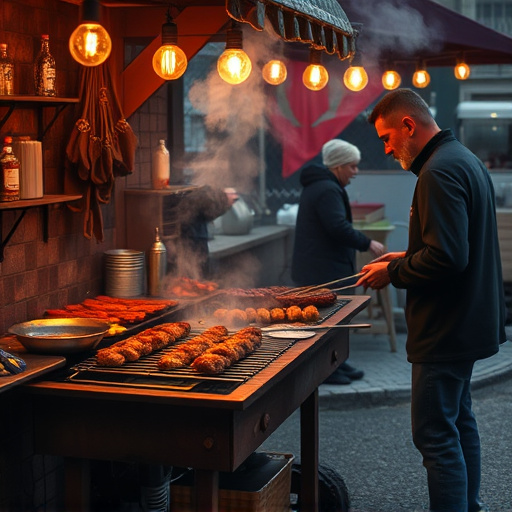Choosing the right cut of pork ribs is key to a successful smoked BBQ ribs recipe, with baby back ribs offering an ideal balance of flavor and ease due to their less complex bone structure. Understanding variations between St. Louis, baby back, and spare ribs allows you to select the perfect type based on your cooking style and desired outcome. Selecting quality cuts with good marbling ensures tender, flavorful meat with crispy edges. This guide teaches you how to choose the best meat, prepare a rub, and master slow smoking for succulent results, making your smoked BBQ ribs recipe a hit at any gathering. Dry-aging enhances flavor through enzymatic breakdown of muscle fibers, resulting in a symphony of smoky, savory tastes balanced with tangy barbecue sauce.
“Unleash the ultimate taste sensation with a mouthwatering journey through the world of smoked BBQ ribs! This comprehensive guide will transform your rib-eating experience. From selecting the perfect St. Louis cut or baby back ribs to mastering the art of dry-aging and seasoning, we’ve got you covered. Learn secrets to achieving that coveted smoky flavor.
Discover how to craft a tangy barbecue sauce that dances on your palate and pairs perfectly with slow-cooked ribs. Accompanying side dishes and beverage suggestions will elevate your BBQ rib feast. Get ready to impress with this ultimate smoked BBQ ribs recipe!”
- Choosing the Right Ribs for Your Smoked BBQ Ribs Recipe
- – Types of ribs: St. Louis cut, baby back, spare ribs, etc.
- – Selecting quality ribs for optimal flavor and texture
- The Art of Dry-Aging and Seasoning
- – Importance of dry-aging ribs to develop depth of flavor
Choosing the Right Ribs for Your Smoked BBQ Ribs Recipe
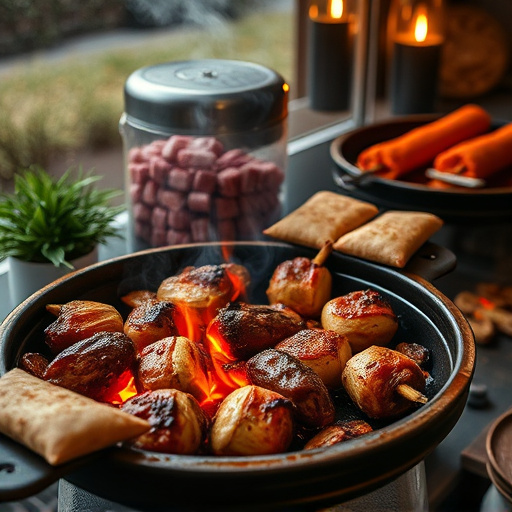
When crafting your perfect smoked BBQ ribs recipe, selecting the right cut of meat is key. Look for pork ribs with good marbling and a fair amount of fat. This ensures that your ribs remain tender and juicy during the slow-smoking process. The most popular choice is baby back ribs, as they offer a balanced flavor profile with less bone to navigate.
Consider the quality of your meat; choose ribs from a reputable source to guarantee freshness and taste. Properly stored ribs can last for several weeks in the refrigerator or freezer. This flexibility allows you to prepare them at your leisure, making meal planning a breeze for your smoked BBQ ribs recipe.
– Types of ribs: St. Louis cut, baby back, spare ribs, etc.
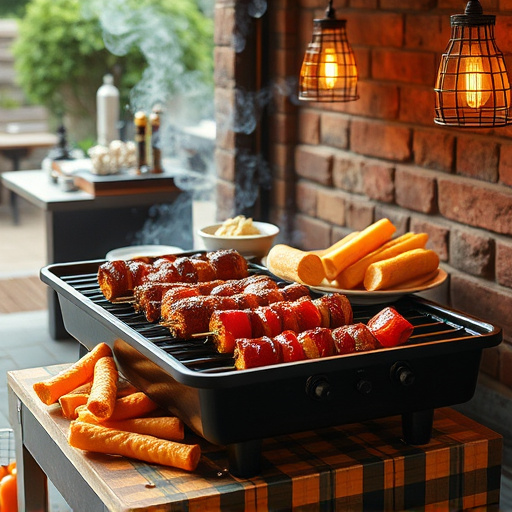
When it comes to smoked BBQ ribs recipes, there are several cuts that each offer a unique experience. The St. Louis cut is known for its distinct spine and generous meat-to-bone ratio, resulting in tender, flavorful bites. On the other hand, baby back ribs are slightly smaller but renowned for their succulent meat and milder flavor profile. Spare ribs, with their abundant marbling and hearty taste, are perfect for those who prefer a more robust dish.
Each type of rib requires specific cooking techniques to achieve the best results. For instance, St. Louis cuts often benefit from longer smoking times due to their thicker cut, while baby back ribs may be better suited for shorter, more focused sessions over low heat. Understanding these variations can help elevate your smoked BBQ ribs recipe, ensuring that you select the ideal cut to match both your cooking style and desired outcome.
– Selecting quality ribs for optimal flavor and texture
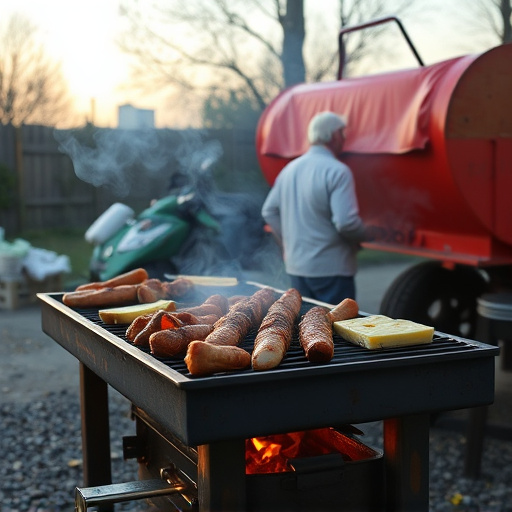
When it comes to crafting the perfect plate of smoked BBQ ribs, the first step begins with choosing the right ribs. Opting for quality cuts is essential to ensure a mouthwatering experience. Look for meaty, full ribs with a good marbling of fat—this adds flavor and keeps the meat tender during the smoking process. The ideal rib should have a subtle layer of fat cap that will render into delicious, crispy edges when cooked correctly.
Choosing the right rib cut, such as baby back or spareribs, is key to a successful smoked BBQ ribs recipe. Each variety has its unique characteristics: baby backs are known for their smaller size and quicker cooking time, while spareribs offer a more substantial meaty experience. The right selection will ensure your ribs achieve that perfect balance of tender meat and flavorful texture, leaving your taste buds craving more.
The Art of Dry-Aging and Seasoning
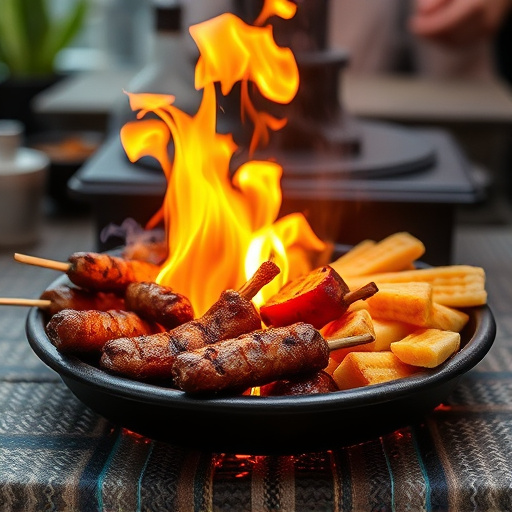
– Importance of dry-aging ribs to develop depth of flavor
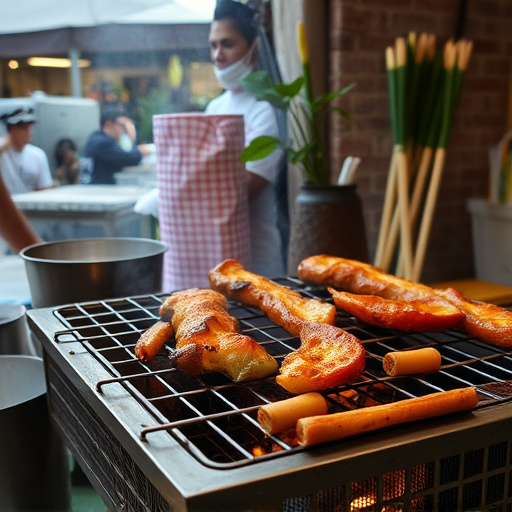
The art of dry-aging is a crucial step in crafting the perfect smoked BBQ ribs recipe. This process allows the meat to develop a complex depth of flavor that cannot be rushed. By hanging the ribs for several weeks, the natural enzymes break down the muscle fibers, making the meat tender and juicy. During this time, the flavors from the dry rub infuse deeper into the flesh, creating an unforgettable taste profile.
Dry-aging enhances the overall dining experience by ensuring each bite is a symphony of smoky, savory notes balanced with a tangy twist from the barbecue sauce. It’s a simple yet powerful technique that sets apart a good rib recipe from a great one, making it essential for any BBQ enthusiast to master.
